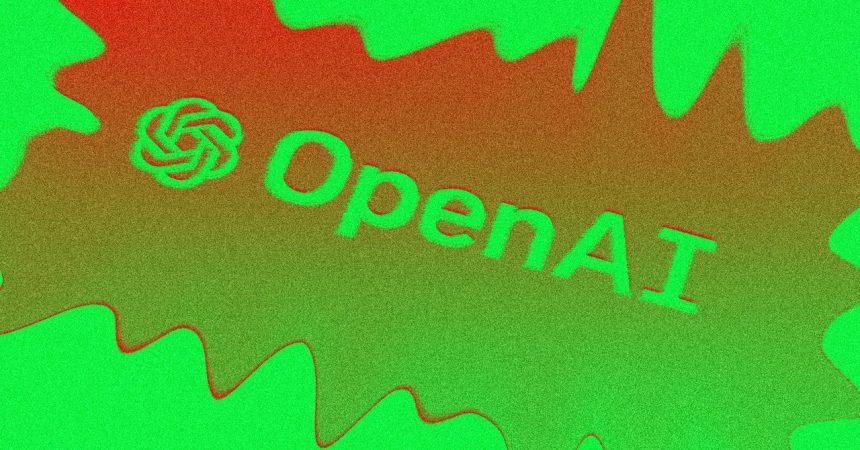OpenAI has launched o3-mini, a smaller and more efficient version of its most advanced AI model, offering it for free to users of its ChatGPT service. This move comes as a direct response to the recent release of DeepSeek’s R1, a powerful open-source AI model from a Chinese startup that has sent ripples through the US tech industry. OpenAI’s decision to offer o3-mini free of charge mirrors DeepSeek’s strategy, placing pressure on other major AI players like Google and Anthropic to reconsider their pricing models. The company emphasizes o3-mini’s enhanced reasoning abilities, breaking down complex problems into smaller components for more effective problem-solving, and positions it as a significant advancement in the capabilities of smaller AI models. While free access is extended to all ChatGPT users, those using the free tier will face limitations on the number of queries they can submit compared to Plus, Team, and Pro subscribers.
The development of o3-mini has involved a concerted effort from OpenAI’s researchers, with reports indicating they’ve been working intensively to prepare the model for public release. Furthermore, OpenAI has been actively recruiting PhD computer science students for a research collaboration involving unreleased models, offering competitive hourly rates. The company has also engaged Mercor, a recruitment firm it frequently uses for model training staff, seeking expertise in crafting challenging scientific coding questions to evaluate large language models’ capabilities. This recruitment drive aligns with the company’s focus on evaluating and enhancing its models’ proficiency in complex problem-solving, particularly in scientific domains. This suggests a strategic move towards bolstering its AI models’ capabilities in specialized areas, possibly as a competitive edge against open-source models like DeepSeek’s R1.
The timing of o3-mini’s release strongly suggests a reaction to the disruptive influence of DeepSeek’s R1, which boasts significant advancements in both training and serving efficiency. DeepSeek’s achievement in developing a powerful model with seemingly fewer resources than major US AI companies has raised concerns within OpenAI, prompting them to prioritize efficiency in their own model development. While the exact details of DeepSeek’s resource expenditure remain undisclosed, OpenAI suspects that R1’s training might have incorporated output from their own models, further fueling their competitive drive. This competitive landscape emphasizes the growing importance of efficiency in AI model development, as it directly impacts cost and accessibility, becoming a crucial factor in the broader adoption and application of AI technologies.
OpenAI’s move to offer o3-mini for free underscores its determination to maintain its leadership position in the rapidly evolving AI landscape. The company emphasizes o3-mini’s strength in math, science, and coding, highlighting its potential for diverse applications. The new model also incorporates innovative features such as web search integration, the ability to call functions from user code, and adjustable reasoning levels that balance speed and problem-solving depth. These features aim to provide users with a more versatile and powerful tool, further solidifying OpenAI’s position as a key player in the ongoing development and commercialization of cutting-edge AI technologies.
DeepSeek’s rapid emergence has prompted questions about the effectiveness of US government strategies aimed at curtailing China’s AI advancements. Despite sanctions designed to restrict China’s access to advanced Nvidia chips commonly used in AI model development, DeepSeek’s R1 demonstrates significant progress. While DeepSeek’s research mentions various Nvidia chips, the specific hardware employed in R1’s development remains uncertain. This ambiguity raises questions about the efficacy of existing sanctions and the potential need for revised strategies to address the evolving global AI landscape. The situation also underscores the increasing global competition in AI development and the challenges in maintaining a technological edge in such a rapidly advancing field.
While OpenAI’s o3-mini may not entirely surpass R1 in terms of cost-effectiveness, it signifies the company’s commitment to prioritizing efficiency in future model development, especially given the escalating competition. OpenAI acknowledges the disruptive potential of open-source models like R1 and is actively adapting its strategy to address this challenge. By offering o3-mini for free, OpenAI is attempting to maintain its market position and ensure the widespread accessibility of its advanced AI technology while simultaneously demonstrating its commitment to continuous innovation and improvement in the face of emerging competition. The ongoing competition between OpenAI and DeepSeek highlights the dynamic nature of the AI field and the importance of adaptability and innovation in maintaining a competitive edge.



